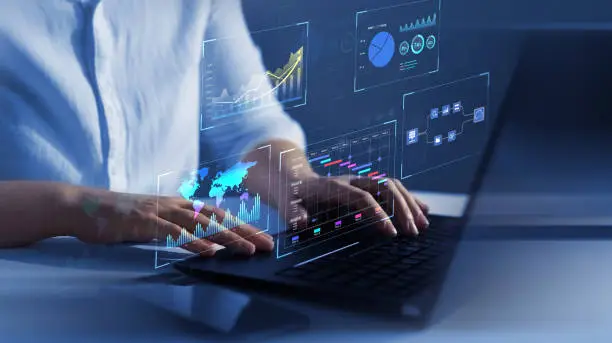As we approach 2024, the digital landscape continues to evolve at an unprecedented pace. This article explores the most exciting web design trends that will shape user experiences in the coming year, blending aesthetics with functionality to create immersive digital environments.
Neomorphic Glassmorphism 2.0
The evolution of glassmorphism takes center stage in 2024 with more sophisticated implementations. This trend combines frosted glass effects with subtle lighting to create interfaces that appear to float above the background.
Enhanced depth perception through multi-layer glass panels
Dynamic blur that adjusts based on scroll position
Color-shifting glass effects that respond to user interaction

AI-Powered Dynamic Interfaces
Artificial intelligence moves beyond backend functionality to directly influence interface design. Websites now adapt in real-time to user behavior, preferences, and even emotional state detected through webcam analysis.
Layouts that reorganize based on user attention heatmaps
Color schemes that adjust to time of day and ambient light
Content that morphs based on predicted user intent
Holographic UI Elements
With the rise of AR-ready devices, web interfaces begin incorporating holographic design elements that appear to float in three-dimensional space, creating an illusion of depth without requiring special glasses.
Parallax effects that respond to device orientation
Elements that cast realistic virtual shadows
Interactive 3D objects that can be rotated and examined

Key Takeaways
Color Evolution
Expect to see more duotones with unexpected color pairings and gradient meshes that create organic, flowing color transitions.
Micro-Interactions
Every hover, click, and scroll will become an opportunity for delightful micro-animations that guide users intuitively.
Typography
Variable fonts will dominate, allowing single font files to behave like multiple weights and styles with smooth interpolation.
Biomorphic Organic Shapes
Moving beyond rigid grids, 2024 sees a surge in fluid, organic shapes inspired by nature. These designs create more human-friendly interfaces that feel intuitive and comfortable to interact with.
Algorithmically-generated unique organic patterns
Shapes that subtly "breathe" with gentle animation
Layouts that grow and adapt like living organisms

Zero-UI Navigation
The most advanced sites are beginning to eliminate traditional menus altogether, relying instead on gesture controls, voice commands, and predictive navigation that appears exactly when needed.
Eye-tracking navigation for compatible devices
Context-aware floating action buttons
Haptic feedback for touchless interactions

Designing Tomorrow's Web Today
The web design trends of 2024 represent more than just aesthetic shifts — they reflect our evolving relationship with technology. As designers, our challenge is to harness these innovations to create experiences that feel both cutting-edge and effortlessly intuitive. The future of web design isn't just about looking beautiful; it's about creating interfaces that understand and adapt to human needs in real-time.
Which of these trends excites you the most? I'd love to hear your thoughts and see how you're incorporating these concepts into your own projects.